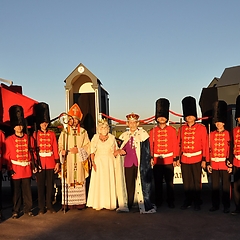Lanenkaatsen (Frisian lane handball) is held in Harlingen around the longest day of the year, around June 21. For one week, handball is played on 'de Lanen' (the Lanes), a street in Harlingen, from 7:30 pm until dark. This is the local variant of the handball game popular in Friesland. Handball is played by two teams of three. In both serve and return, the art is to hit the ball inside the court out of reach of the opponent.
From Monday to Thursday are the preliminaries, where the teams compete against each other in different groups on the basis of a knock-out race. There is interaction between the public and the handball players, with jokes and comments being made back and forth because, besides being a sporting event, it is above all a social one. On Thursday afternoon, a school championship of lanenkaatsen is played. On Friday, the finals are played, with the players wearing traditional red and white Frisian sashes. Traditionally, the winners will have their photo taken and it will be added to the gallery of honour from 1950 to the present day. They receive a garland of flowers, a cash prize and side prizes made available by local businesses.
Lanenkaatsen is a low-threshold event, open to all. Handball players can sign up for one of seven groups in the months before. The groups consist of different age categories for men and women, boys and girls. The composition of the teams is based on a draw, and part of the tradition is to respect this draw - with a witticism.



